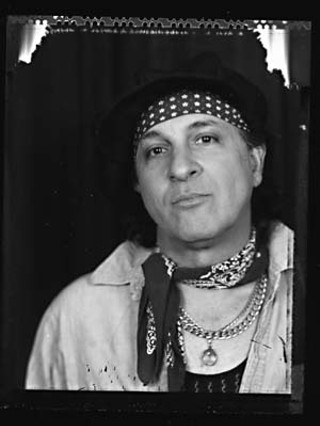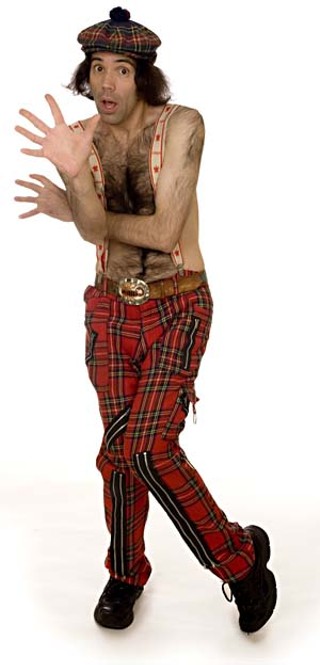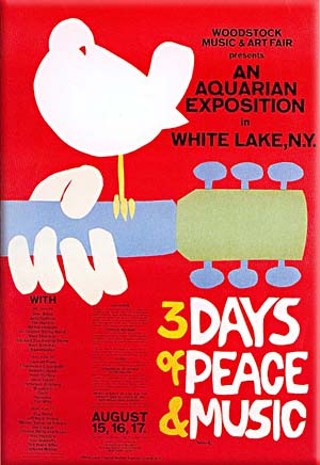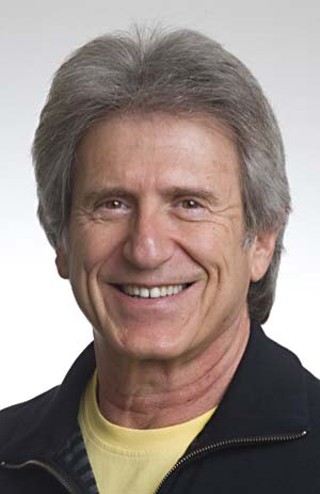Ballroom Dancing
South by Southwest Music panelists sound off
Fri., March 6, 2009

Bob Ludwig
The Loudness Wars
Wednesday, March 18, 3-4:15pm, Room 15
Turn on the radio. There's a good chance that's Bob Ludwig you're hearing.
Ludwig, who has a Master of Music in trumpet, has put his skills to work on albums by Jimi Hendrix, Led Zeppelin, Bruce Springsteen, the Velvet Underground, and Nirvana, to name five. Lest you think he can only rock, John Zorn, Steve Reich, and Boozoo Chavis also find themselves sprinkled among Ludwig's thousands of credits.
There's no trumpet on Rush's Moving Pictures or U2's The Joshua Tree, right? Master of Music that he is, Ludwig's better known as the masterer of music, the final sonic tweak on half of everything you listen to.
"When I did the Rolling Stones reissues for ABKCO, Mick [Jagger] called up and accused them of overdubbing something on the new mastering," he writes via e-mail. "Obviously that would never happen, but the extra clarity of the new electronics brought out aspects of the recording he didn't remember."
Ludwig's on the front lines of what's become known in the industry as the compression wars, the never-ending battle to turn up the internal volume of music so that it stands out to listeners. While a relatively recent phenomenon, its roots extend further than many combatants realize.
"Back in the vinyl disk-cutting days, people like me made our reputations on being able to cut the loudest and most musical LP and single discs possible," he explains. "With tight playlists on Top 40 rock formats, record producers always wanted their disc to stand out among the stack of discs radio station program directors played each week to pick two or three songs to add to their playlists. Naturally, when a producer heard another producer's song that was louder, they'd respond, 'Hey, how come my song isn't as loud as his?' thus leading to ever louder singles."
According to Ludwig, an average listener usually thinks louder often does sound better. "Unfortunately, it turns out that as the volume is increased, the dynamics and life of the recording are diminished by the same amount. The crushing of the recording's dynamics assaults on the auditory system. The body's instinct says, 'I'm tired of that one,' because it's in-your-face from start to finish."
Unfortunately, even an industry legend gets collaterally damaged, and we're all the poorer for it. "I lose the war every day," Ludwig acknowledges. "It's gotten so bad that mixers are afraid to give their clients a real piece of music, and they precrush it before giving it to me. Some of them crush it so loud that it's way beyond what I would have done in mastering. It leaves my hands tied, and there isn't much I can do with such garbage."– Michael Bertin
Steve Knopper
Innovations in Digital Music
Friday, March 20, 11am-12:15pm, Room 16B
In his recent book, Appetite for Self-Destruction: The Spectacular Crash of the Record Industry in the Digital Age, author Steve Knopper pieces together the now-familiar plight of the record industry. The Rolling Stone contributing editor offers incisive and vituperative analysis, taking the music industry to task for its systemic dependence upon conglomerated corporations of major labels and their subsequent dismissal of their consumers' demands or the realities of the digital marketplace. With Knopper's history as background, the panel he's moderating focuses on restructuring current music-business models for the Digital Age.
"The broad thing that intrigues me as a future model for the industry is this idea of giving something away for free or selling it incredibly cheaply, which is usually in the recorded area with MP3s, and using that to generate the marketing to sell a more expensive product," explains Knopper. "That general model seems bulletproof to me. Not only is it traditional in that it's what radio had done for the record industry for years and years, but also, if you think about the most progressive models that we've seen for selling music over the past few years in the post-Napster era, that has the most juice to it."
While new technologies and business models empower the consumer and artists over the majors' gatekeeping exploits, Knopper remains interested in how labels will reinvent themselves within the evolving marketplace. Still possessing valuable experience and resources, labels are seeking revenues beyond the former purview of their recorded products, such as their forays into 360 deals and more open digital strategies.
"What the labels are doing now is pretty smart," Knopper opines. "They're not just putting out an album; they're putting out many, many different versions of an album. They're putting out ringtone versions of songs and tracks for Guitar Hero and Rock Band, and they're licensing music to movies and TV shows and so forth. When you gather up enough of these little revenue streams, they add up to a larger revenue stream.
"But it's also sort of too little, too late. These companies are shrinking and will continue to shrink, because they're still directly tied to the CD, and the CD model is shrinking. Once you start to curb that expectation, then maybe you really can move on." – Doug Freeman

Sylvain Sylvain
The Sound and the Fury
Friday, March 20, 2-3:15pm, Room 18ABC
One day it will please us even to remember this: the economy in tatters, traditional avenues to artistic success detoured by leapfrogging technological change, an online revolution mired in digital rights. What's a young musician to do?
"First of all, as a musician, you have to make peace with being broke all the time," says New York Dolls guitarist Sylvain Sylvain, who knows a thing or three about survival. "I'm 58 years old, and I've still never owned a piece of property in my life. Right now, in these depressed economic times, the best thing you can do [as an emerging artist] is to learn your craft.
"And you don't need the record labels to do that anymore, either.
"What was great about what they call punk – I don't like the term, but whatever – was that at that moment, all the established record companies were telling us we had no talents, we had no reason to sing or to write songs, that what we were doing wasn't going to be big or mean anything. And of course punk didn't make a lot of money – I bet you disco made a whole lot more – but the point was that you learned everything. You were your own A&R man. You were your own record company. You actually manufactured the music. You had it pressed up. You learned about vinyl and how to do artwork for an album cover or a 45 cover. Being punk forced you to learn every aspect of the whole damn business, you know?"
So, as it turns out, the core DIY ethos of punk rock won. Now your laptop is the mixing board, your garage band is GarageBand, your fan base is MySpace.
"These are great times," enthuses Sylvain. "They are times of great change and times of opportunity if you're going to call yourself a musician or become one. Because, man, right here, right now, this is your open door.
"Your voice might get heard.
"Back in my day, the big fear was when Sony introduced the boom box. Everybody in the industry thought that was going to kill the music business. And now the same thing is happening with music online today. People are downloading it for free, sure, but you know what? What kills one thing gives birth to another." – Marc Savlov

Derek Sivers
Artist as Entrepreneur
Wednesday, March 18, 1:30-2:45pm, Room 18ABC
"Nobody knows what the future of this industry looks like," says Derek Sivers, the man who fathered CD Baby, one of the planet's largest independent online music retailers. "Anybody who says they do is full of shit."
Despite last year's overall decline in compact-disc sales, CD Baby saw a 2% sales bump in 2008. This continuing success can be attributed to the combination of impeccable customer service and an artist-friendly business approach. With more than 5 million CDs sold since 1998 and more than 250,000 musician clients, CD Baby offers independent musicians a DIY distribution platform and pays artists weekly based on music sales. An estimated $100 million went to indie artists and labels distributed through the website. This alternative to big-label contracts earned Sivers many followers, but by last August, the Web wunderkind was ready for a change of pace.
"I did not sell CD Baby for the money," Sivers says. "I sold it because I was sick of it."
Having made more than $20 million on the sale, Sivers put most of the fortune into his Independent Musicians Charitable Trust, telling Wired's Listening Post blog in October, "All of that money is going to go to music education when I die." With CD Baby sold, Sivers' current plan – code name, MuckWork – is to create a company helping musicians by offering an "army of assistants worldwide" for hire. At the Artist as Entrepreneur SXSW panel, a discussion moderated by Panos Panay, CEO and founder of Sonicbids; Sivers; and others will focus on marketing and digital distribution strategies. To Sivers, who was a working musician long before he hit the Interweb jackpot, it's a chance to share the wealth of his entrepreneurial experience with his fellow creative artists.
"As a musician, I think I was more successful by my own definitions," says Sivers. "CD Baby was more successful from other people's definitions." – Dan Oko

Topspin's Ian Rogers
Do a 360 Deal With Yourself
Thursday, March 19, 3:30-4:45pm, Room 18ABC
With recorded music profits continuing to nose-dive for the traditional music industry, the past two years have given rise to a new model: the 360 deal. Since Madonna's high-profile arrangement with Live Nation in 2007, the model of shared revenues has attempted to compensate for lower album sales by allowing management or labels to tap into merchandise and tour profits, money previously left solely to artists.
The ever-evolving parade of new technologies for music, however, allows savvy artists to harness many of the resources once monopolized by labels. And whereas labels often marketed in broad strokes, independent musicians now have the ability to specifically target fans and create continuing, direct relationships with them. "There are so many different kinds of marketing you can do," acknowledges Ian Rogers, former vice president of video and media applications at Yahoo! Music and current CEO of new media technology company Topspin. "Now you have artists out there trying to do everything: manage their MySpace pages, their Facebook, their Twitter; build their own websites; get everywhere."
Topspin's software, which has been undergoing a staged unveiling by working with artists ranging from David Byrne & Brian Eno for the release of Everything That Happens Will Happen Today (see "ACL Fest Friday Reviews," Sept. 26, 2008) to independent buzz bands such as Austin's White Denim, seeks to provide a program that Rogers describes as "Pro Tools for marketing." With capabilities to manage and analyze marketing and distribution through a customizable platform, Topspin seeks to connect artists directly with their customer base. Putting those management capabilities in the hands of the bands often does not preclude the need for establishing business partnerships, however.
"Artists should do a 360 deal with themselves for starters," asserts Rogers. "Then they can choose their business partners. It might be a management company; it might be a label.
"There's a real separation between art and commerce, and artists still need business partners," he continues. "Labels are going to have to adapt to what the world needs. What artists need from labels is marketing and branding, and, just in general, business help. The hard part is that labels in the past have built their gains on scarcity, and you can't base a business model on scarcity anymore. You have to base it on value creation, welcoming your consumers and artists and everyone else into the process." – Doug Freeman

Nardwuar's Video Vault
Friday, March 20, 3:30-4:45pm, Room 16B
There's a man in Vancouver, British Columbia, Canada, who has devoted his life to interviewing pop culture icons. He often wears plaid and always wears a tam, at least since Sebastian Bach ran off with his tuque. He's possibly the most Canadian Canadian ever born. He comes across as schtick, a mix of Tom Green and Ali G, but upon closer inspection, Nardwuar the Human Serviette is a walking Wikipedia. He's Google incarnate, and while he might be neurotic, Nardwuar is living his dream. And yes, his name, since 1986, is actually Nardwuar.
"Basically, I'll interview anyone," he begins. His eponymous radio program has been gracing University of British Columbia's CITR Radio since October 1987, and he's been putting the underground on videotape since 1990.
"As things progressed, I would transcribe the interviews for fanzines ... and then when you start writing for mags, they start pitching you with stuff, and I was able to do an interview with Nikki Sixx even though Universal Records had banned me from interviewing anybody on their record label because Beck told me to fuck off in 1994!"
Nardwuar speaks in run-on exclamations, each clause more excited and nasal than the last. He has stories of everyone from Snoop Dogg to Jello Biafra, Andrew W.K. to Mikhail Gorbachev. Quiet Riot threatened his life, Sonic Youth broke his heart, and Franz Ferdinand's Alex Kapranos sang "Take Me Out" with Nardwuar's band, the Evaporators. Nardwuar asks the tough questions ("I won't do anything that's racist, sexist, or homophobic") and questions the tough acts.
"You wonder, 'Nardwuar, why are you interviewing this band?' Well, Sloan gave me the term: 'GGBB: good guys, bad band.' In other words, most bad bands have good guys in them, so it doesn't really matter who you talk to. And the good bands that are bad guys, you can just go with the flow. Like Sonic Youth? They were kind of bad guys, but whatever. We like them anyway."
So who is Nardwuar? He's a persistent archivist, a research maniac, the man who interviewed Kurt Cobain just before his death and who's dying to get Little Steven and Lil Jon in the same room. He's a guerrilla journalist, and whether he's posting new video interviews to www.nardwuar.com, presenting them to a panel crowd for Nardwuar's Video Vault ("Hopefully there will be some people, and if they do come, they will get gifts"), or performing at SXSW with the Evaporators, he's doing it all with soul.
"Everybody has a story. I won't discriminate. ... As long as I live, I'm going to be interviewing people."
Nardwuar is a legend. Just ask Courtney Love. – Darcie Stevens
Nardwuar’s Picks for SXSW 09
Janelle Monáe (Wed., Stubb’s, 8pm; Sat., Vice, 12mid)
M. Ward (Wed., Central Presbyterian Church, 9pm; Thu., Auditorium Shores, 8:15pm)
Lovvers (Wed., Red 7 Patio, 11pm)
Vivian Girls (Thu., Aces Lounge, 9pm)
Black Lips (Thu., Cedar Street Courtyard, 11:30pm; Fri., Emo’s Main Room, TBA)
Little Boots (Thu., Emo’s Annex, 12mid)
Wavves (Thu., the Music Gym Patio, 12mid)
Kid Cudi (Thu., Aces Lounge, 1am)
The Sonics (Fri., Emo’s Main Room, 8pm)
The Evaporators (Sat., Habana Calle 6, 1am)

Doug Sahm's 'Mendocino'
Saturday, March 21, noon-1:15pm, Room 16B
Scattered throughout the small cottage studio behind producer Joe Gracey's home in Spicewood, Freda & the Firedogs are recording together for the first time since their ill-fated 1972 session with Jerry Wexler. That material didn't see release until 2002, long after the quintet had become legendary progenitors of Austin's redneck rock uprising.
This November 2008 recording promises better luck, as Marcia Ball dances her hands across the piano keys and wails the chorus to Doug Sahm's "Be Real." Take after take, the band runs through the song until, finally, gathered at Gracey's computer console for endless playbacks, Ball exclaims: "That's it!
"That's the Doug Sahm groove."
The occasion for the Firedogs' reunion is the new Sahm tribute album, Keep Your Soul, which also features contributions from Alejandro Escovedo, Los Lobos, Jimmie Vaughan, and Sahm scion Shawn. Even such an all-star gathering serves as only a partial reflection of the legacy of the original cosmic cowboy 10 years after his death.
"Doug really is the father of Americana music," offers Bill Bentley, who curated the tribute album and will moderate a panel on Sahm's 1969 comeback LP, Mendocino, and its titular hit. "Musicians gravitated toward Doug because he was so much fun to play with and hang out with, and he turned them on to the idea that you could really use any style at any time or even use them all together. That's Doug's legacy, and to me, that's Americana music."
Of all his recordings, Mendocino was Sahm's biggest success and perhaps the most complete melding of his eclectic sweep of influences.
"A few other things were kind of popular, but Mendocino was the knock out of the park," attests Shawn Sahm. "It turned him on creatively, and with that record, I think people understood a lot of what Doug was about. But he needed that song as far as the business goes. It set in stone Dad's trip, what it was all about."
With a biography by renowned Austin scene-definer Jan Reid (The Improbable Rise of Redneck Rock) set for publication next year by UT Press and a tour of the Sir Douglas Quintet fronted by Shawn in support of the tribute, Sahm's legacy returns to the national forum.
"There was a tendency to take Doug for granted when he lived in Austin," suggests Bentley. "He was just sort of part of Austin. But in the 10 years that he's been gone, I think his impact has gotten more clear." – Doug Freeman

Woodstock
Untold Stories
Saturday, March 21, 3-4:15pm, Room 12AB
It started out simply as "three days of peace and music" and ended up being a pre-eminent cultural touchstone of the 20th century. As Woodstock occurred 40 years ago this August, Warner Home Video commemorates the festival with a deluxe edition of the Oscar-winning film made during the event, including two hours of previously unseen footage. Woodstock: Untold Stories gathers veterans of the happening to discuss what they do and don't remember from those three days.
"It was just madness," recalls Stu Cook, who performed as the bass player for Creedence Clearwater Revival and now makes Central Texas his home. "I remember a sea of people on every road. Our set was supposed to be 8 or 9 at night. It turned out the whole event was ad-libbed from beginning to end. We finally got on around 3 in the morning. I think there might have been four people awake. We followed the Grateful Dead, so after a couple of hours of noodling, we went on. It was dark and real quiet. It was a pretty surreal day."
Word is that footage of CCR's appearance will finally see the light of day in the new bonus material.
"I think we should have been included in the original movie," asserts Cook. "The artists that were included got a huge career bump. John [Fogerty] said we didn't play good enough. My recollection is a little different. I've seen five or six songs, and they're quite good actually, considering what was going on. They're a fairly good representation of what you would have seen at a Creedence show."
As vocalist and keyboard player for the original Santana, Gregg Rolie, another Bay Area musical icon now living near Austin, echoes Cook's observations.
"We were kind of unprepared and hurried," he recalls. "We were pushed onstage because we were there. It was a total unplanned mess. 'Soul Sacrifice' was where the whole band came together. It got in the movie and took off. The first Santana album came out at approximately the same time as the movie. If you were doing it today, it would have had a marketing plan, but then there was nothing like that. There was only one video shot. We hit it just perfect, and we were in the middle of the movie." – Jim Caligiuri

Inside Michael Ochs Archives
Friday, March 20, 3:30-4:45pm, Room 12AB
If you pay close attention to CD reissues and box sets, you've seen the Michael Ochs Archives credited for photos of everyone from Big Joe Turner to Jonathan Richman.
Ochs, younger brother of late folksinger Phil Ochs, established his Venice, Calif.-based stock photography agency in 1977. Before Getty Images acquired the company for an undisclosed sum in 2007, the 66-year-old amassed more than 3 million music and entertainment images from the 1940s through the 1990s. South by Southwest participants can view some of Ochs' favorite finds, many never before shown, at his March 20 presentation.
"It's sort of an oral folk history of rock & roll, and the through line will be my experiences," says Ochs. "I'll be covering everything from racism in rock to having seen the original Alan Freed shows in the Fifties and the British Invasion groups live in the Sixties."
Ochs was born in Austin, but his family moved when he was 6 months old. Growing up in Ohio and New York, he was bitten by the music bug early. Following a stint as his older brother's manager, he "temporarily" moved to the West Coast in 1968. While working in various music industry jobs, Ochs began collecting music photos as a hobby. Eventually, he acquired the work of photographers such as James Kriegsmann along with photo files of defunct teen-rag purveyors such as Laufer Publications. Then one day someone called his office looking for a photo of Lawrence Welk Show regulars the Lennon Sisters.
"We'd had the Laufer collection for five years when one of my staff members said, 'Hey, you want to see some great pictures of the Lennon Sisters?' I said, 'Why would I want to see pictures of the Lennon Sisters?' So I looked, and it was actually pictures of John Lennon, May Pang, Harry Nilsson, and Peter Lawford when they got drunk at the [Hollywood] Troubadour and John Lennon got thrown out.
"These were color transparencies we never knew existed, and they had been misfiled for 20 years under the Lennon Sisters."
Humbly characterizing himself as a "terrible detective," Ochs credits much of his success to serendipity.
"As I always say, had I planned this, I would've failed," chuckles Ochs. "It was right place, right time. It was the kind of thing that needed to be done, and luckily, I had the luck and the skill to do it." – Greg Beets









